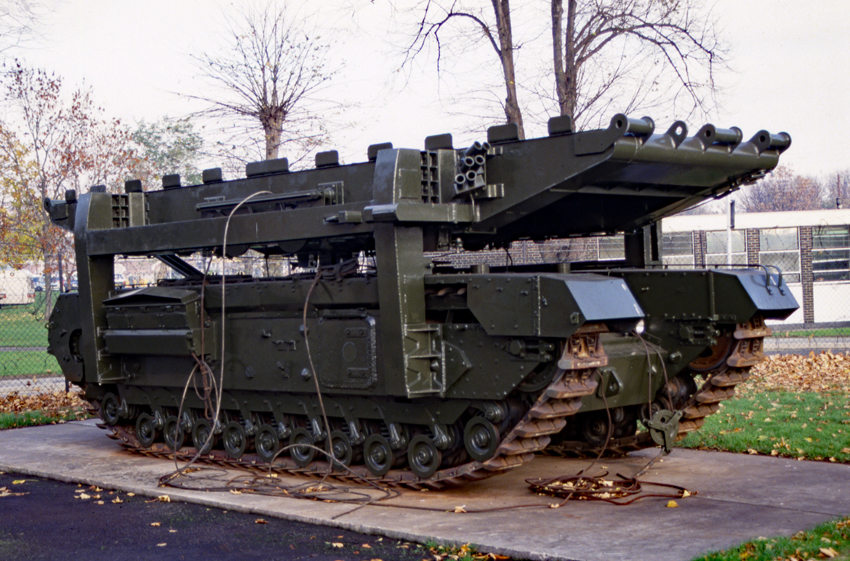|
Churchill AVRE
This is a list of specialist variants of the Churchill tank which were used for purposes other than frontline combat. Churchill Oke A Churchill II or III with a flamethrower. The Oke flamethrowing tank was named after its designer, Major J.M. Oke. The design was basically a Churchill tank fitted with the Ronson flamethrower equipment. A tank containing the flame fuel was fitted at the rear, with a pipe from it leading to the fixed angle mounting on the front hull to the left, leaving the hull machine gun unobstructed. Three (named "Boar", "Beetle" and "Bull") were present in the first wave at Dieppe; they were quickly lost, and abandoned. Assault Vehicle Royal Engineers Proposed by a Canadian engineer as a result of experience from the Dieppe Raid, the Assault Vehicle Royal Engineers (AVRE) was a Churchill Mark III or IV equipped with the "Mortar, Recoiling Spigot, Mark II" (or ''Petard''), a spigot mortar that throws the Bomb Demolition Number 1 ("Flying dustbin") ... [...More Info...] [...Related Items...] OR: [Wikipedia] [Google] [Baidu] |
Churchill Tank
The Tank, Infantry, Mk IV (A22) Churchill was a British infantry tank used in the Second World War, best known for its heavy armour, large longitudinal chassis with all-around tracks with multiple bogies, its ability to climb steep slopes, and its use as the basis of many specialist vehicles. It was one of the heaviest Allied tanks of the war. The origins of the Churchill's design lay in the expectation that war in Europe might be fought in conditions similar to those of the First World War, and thus emphasised the ability to cross difficult ground. The Churchill was hurried into production in order to build up British defences against a possible German invasion. The first vehicles had flaws that had to be overcome before the Churchill was accepted for wide use. After several Marks (versions) had been built, a better-armoured specification, the Mark VII, entered service with the British Army. The improved versions performed well in the later stages of the war. The Churchil ... [...More Info...] [...Related Items...] OR: [Wikipedia] [Google] [Baidu] |
Royal Engineers
The Corps of Royal Engineers, usually called the Royal Engineers (RE), and commonly known as the ''Sappers'', is a corps of the British Army. It provides military engineering and other technical support to the British Armed Forces and is headed by the Chief Royal Engineer. The Regimental Headquarters and the Royal School of Military Engineering are in Chatham in Kent, England. The corps is divided into several regiments, barracked at various places in the United Kingdom and around the world. History The Royal Engineers trace their origins back to the military engineers brought to England by William the Conqueror, specifically Bishop Gundulf of Rochester Cathedral, and claim over 900 years of unbroken service to the crown. Engineers have always served in the armies of the Crown; however, the origins of the modern corps, along with those of the Royal Artillery, lie in the Board of Ordnance established in the 15th century. In Woolwich in 1716, the Board formed the Royal Regime ... [...More Info...] [...Related Items...] OR: [Wikipedia] [Google] [Baidu] |
Hobart's Funnies
Hobart's Funnies is the nickname given to a number of specialist armoured fighting vehicles derived from tanks operated during the Second World War by units of the 79th Armoured Division of the British Army or by specialists from the Royal Engineers. They were designed in light of problems that more standard tanks experienced during the amphibious Dieppe Raid, so that the new models would be able to overcome the problems of the planned invasion of Normandy. These tanks played a major part on the Commonwealth beaches during the landings. They were forerunners of the modern combat engineering vehicle and took their nickname from the 79th Division's commander, Major General Percy Hobart. The vehicles converted were chiefly Churchill tanks, and American-supplied M4 Sherman tanks. History Plans to invade continental Europe were completely revised after the failure of the raid on Dieppe in 1942. Allied units in Normandy would need to overcome terrain, obstacles and coastal fortific ... [...More Info...] [...Related Items...] OR: [Wikipedia] [Google] [Baidu] |


